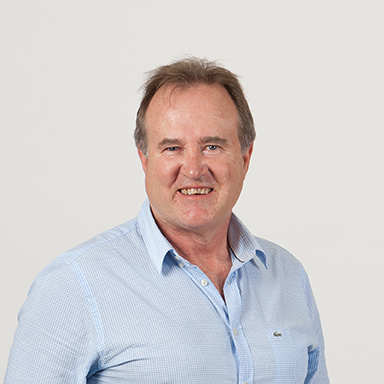Many women experience urinary incontinence but not everyone seeks medical help. Although it can’t always be cured, there are ways to manage the condition very effectively, including the new Emsella Chair.
Often, the underlying cause of urinary incontinence and prolapse is defective connective tissue that leads to weakened pelvic floor muscles. This problem worsens due to poor obstetric management of labour and even pregnancy,or hormonal changes during menopause. The risk of incontinence increases with age, but it doesn’t have to disrupt a patient’s life and keep them from being active. Dr Wynand Truter, a gynaecologist and obstetrician at Mediclinic Durbanville, explains there are treatments available to manage this often-embarrassing condition.
“There are three types of urinary incontinence,” Dr Truter says. “Urge incontinence (also called overactive bladder) occurs when your bladder suddenly feels full, but you can’t get to the toilet in time. Stress incontinence – the most common type of urinary incontinence in women – describes the leaking of urine when you cough, sneeze, laugh, lift something heavy or perform certain exercises. The third type of urinary incontinence is a combination of the two, which can be difficult to discern and treat.”
Dr Truter adds that while urge incontinence can often be successfully managed with medication, severe stress incontinence might require surgery. “This entails inserting a mesh sling that offers extra support to the urethra, keeping it closed when pressure is exerted, so that the individual does not leak urine,” Dr Truter explains. “However, if the stress incontinence is light to moderate, we can address the poor quality of the pelvic floor muscles through physiotherapy and a number of sessions on the BTL Emsella Chair.”
In the past, Kegel exercises (named after the American gynaecologist, Arnold Henry Kegel) were recommended asthe treatment of choice. But today women have the option of the non-invasive Emsella Chair, a modality that focuses high-intensity focused electromagnetic energy (HIFEM) on the pelvic floor muscles to cause deep and intense contractions. This stimulation is similar to Kegel exercises and plays a significant role in re-educating the muscles and restoring neuromuscular control.
“Six sessions on the Emsella chair are ideal for those who opt not to have surgery, or who don’t have severe stress urinary incontinence,” Dr Truter says. “There are numerous benefits, including the fact that it is pain-free, and that women often report a significant improvement in symptoms after only two 30-minute sessions. Although some women might still require a mesh sling surgical procedure at a later stage, the Emsella chair can delay the need forseveral years.”
Patients remain fully clothed during the sessions and don’t need any recovery or downtime afterwards. After 30 minutes on the chair, the patient experiences more than 11 000 pelvic floor contractions, which has the same effect as performing the same number of the Kegel exercises in a fraction of the time. “At present, the Emsella at Mediclinic Durbanville has two settings – the first is for muscle exercising to strengthen pelvic floor muscles,” Dr Truter says. “The second one targets the vaginal musculature which leads to enhanced sexual function for women. I am currently investigating the third setting that manipulates the electromagnetic waves to target nerve fibres and alleviate chronic pelvic pain.
Dr Truter is a co-founder of Mediclinic Durbanville’s Pelvic Floor Unit that currently comprises a 16-strong multidisciplinary team.
“We formed this unit in 2014 because pelvic floor pathology is difficult to quantify and treat appropriately,” he explains. “Historically, if an individual had a prolapse (bladder or bowel) or urinary incontinence, they would go to a specialist gynaecologist, or urologist, who would then treat the specific condition. However, we know that the whole pelvic cavity and the organs function as a complete unity. If a doctor repairs a cystocele with bladder symptoms, it may affect bowel anatomy and functioning as well. This is also true vice versa. The best solution is to address all the compartments simultaneously.”
Dr Truter, along with urologist Dr Gawie Bruwer, general surgeon Dr Frikkie Rademan, physiotherapists, radiologists, dieticians and manometrists meet twice a month to discuss complex cases and agree on ideal treatment programmes. “We have psychologists involved too as we can’t fix a patient’s functional problem without treating the emotional aspects of the condition,” Dr Truter adds.
The ultimate goal of the Pelvic Floor Unit is to quantify the system, streamline care pathways and maximise patient outcomes.
Further publications on the topic
Doctors 3




